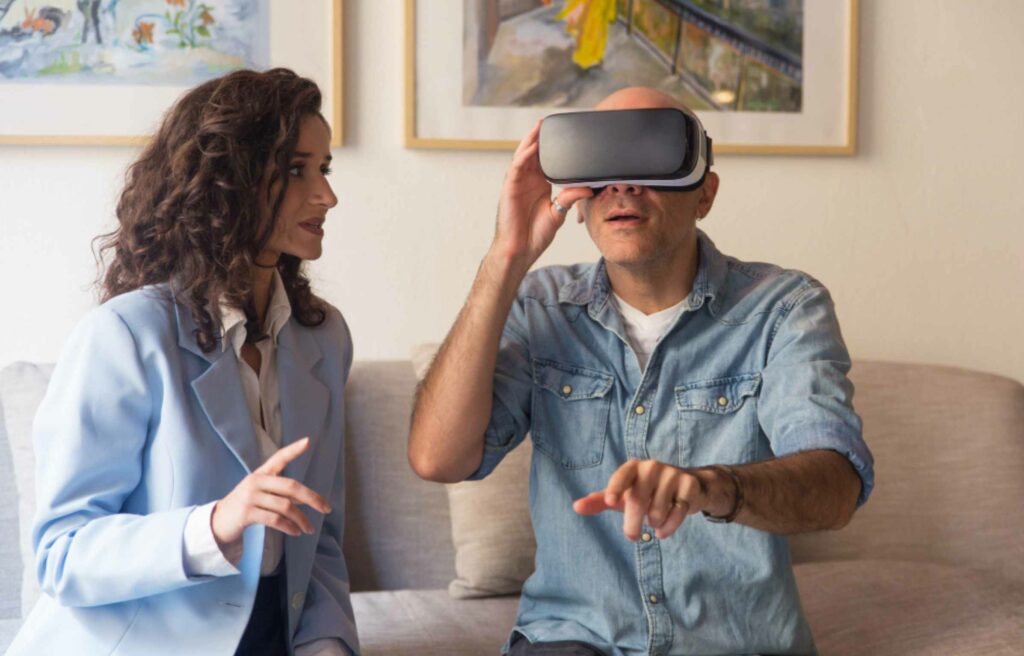In an era where technology is revolutionizing every industry, virtual tours have emerged as an essential tool for buyers and sellers alike. Gone are the days of traditional property viewings, as virtual tours have swiftly become the new norm. Whether you’re a prospective homebuyer or a real estate agent, embracing virtual tours in real estate can unlock a world of opportunities and benefits that you simply can’t afford to miss.
In this article, we will explore the key advantages of virtual tours and why they have become a game-changer in the world of property transactions. So fasten your seatbelts and get ready to embark on a captivating journey through the world of virtual tours in real estate!
1. Increased Access and Convenience
Virtual tours in real estate have revolutionized the industry by overcoming geographical barriers. Potential buyers can now explore properties from anywhere in the world, transcending the limitations of physical distance. Its increased access and convenience have transformed the way people search for homes. Unlike traditional open houses or limited visiting hours, virtual tours make the real estate available 24/7, providing convenience and flexibility for both agents and buyers. This accessibility allows buyers to explore properties at their own pace and from the comfort of their own homes.
2. Enhanced Visualization
One of the most significant benefits of real estate virtual tours is the enhanced visualization they provide. Potential buyers can fully immerse themselves in the property through high-quality imagery, interactive floor plans, and 360-degree views. Unlike static images or descriptions, virtual tours allow buyers to walk through each room, and examine architectural details. Get a realistic sense of the space and layout. This level of immersion and interactivity helps buyers visualize themselves living in the property, making it easier for them to make informed decisions.

3. Time and Cost Efficiency
Virtual reality in real estate offers a time- and cost-efficient solution for agents and potential buyers. Instead of spending countless hours physically visiting multiple properties, buyers can utilize virtual tours to narrow their choices and prioritize their visits. This streamlined property selection process lets buyers focus on properties that genuinely capture their interest. By minimizing the need for physical visits, virtual reality in real estate saves valuable time and reduces travel expenses for agents and buyers. It also benefits agents by allowing them to showcase properties to a larger audience without needing multiple in-person showings.
4. Expanded Reach and Target Audience
Virtual tours in real estate have the potential to reach a broader audience and attract potential buyers who may have previously been unable to attend physical showings. Geographical constraints are no longer a barrier, as virtual tours allow properties to be showcased to individuals from around the globe. International buyers can now explore properties remotely, breaking down international barriers and expanding the target audience for real estate agents. Its expanded reach increases the chances of finding the right buyer for a property and maximizing its potential.
5. Increased engagement and interactivity
Real estate virtual tours provide an interactive and engaging experience for potential buyers. Users can navigate through properties, zoom in on specific features, and interact with virtual elements such as hotspots or embedded media. Incorporating multimedia elements like videos, voiceovers, and descriptive text further enhances engagement and captivates the audience. By immersing buyers in the property, virtual tours create a lasting impression, increasing the chances of making a sale. The interactive nature of virtual tours also allows buyers to ask questions. And Seek clarification on specific aspects of the property, fostering better communication between buyers and agents.
6. Competitive Advantage for Real Estate Agents
Standing out from the crowd is crucial in the fiercely competitive real estate market. Real estate agents who embrace virtual tours demonstrate their commitment to leveraging technology and delivering innovative solutions to their clients. By providing an immersive and convenient experience, these agents can establish trust and credibility with potential buyers. Virtual tours have become a defining feature that sets these agents apart from their competitors, positioning them as true leaders in the industry. The ability to offer virtual tours gives agents a unique selling point and attracts clients who value convenience and cutting-edge technology.
7. Risk Mitigation for Buyers
Virtual tours in real estate minimize the risk of wasted visits for potential buyers. By providing an in-depth and realistic experience before committing to physical visits, buyers can pre-screen properties and ensure that only those of genuine interest are visited in person. It saves buyers time and effort, as they can narrow their options based on their virtual tour experiences. The immersive nature of virtual tours also allows buyers to make more informed decisions, reducing the likelihood of buyer’s remorse and increasing overall satisfaction with their purchase.
8. Timeless Marketing Tool
Real estate virtual tours provide evergreen content for real estate listings. Once created, virtual tours can be utilized repeatedly for different marketing campaigns or listings, making them a long-term investment for real estate agents. They can be embedded in websites, shared on social media platforms, and integrated into email marketing campaigns. Virtual tours in real estate retain their value over time, allowing agents to showcase their portfolios and attract potential clients even after selling the initial listing.
9. Continued Use and Repurposing
Virtual tours have a shelf life beyond the initial property sale. Real estate agents can repurpose virtual tours for new listings, giving potential buyers a comprehensive view of their portfolio. Virtual tours can also serve as a reference for future buyers, allowing them to visualize renovations, interior design changes, or improvements that may have been made to the property. This flexibility and versatility ensure that virtual tours in real estate continue to provide value even after the sale, allowing agents to maximize their investment in virtual tour technology.
10. Environmentally Friendly Solution
Virtual tours in real estate contribute to a more sustainable and environmentally friendly approach. By reducing the need for physical visits to properties, virtual tours help minimize carbon emissions associated with travel. With the growing focus on environmental consciousness, virtual tours in the real estate industry align with adopting sustainable practices. Real estate agents who offer virtual tours can position themselves as environmentally responsible professionals, appealing to clients who value eco-friendly solutions.

Types of Virtual Tours Commonly Used in Real Estate
The real estate industry has witnessed a surge in the popularity of various virtual tours, providing potential buyers with immersive and interactive experiences. Here are some commonly utilized virtual tour options in the real estate sector:
- 360-Degree Tours: Step into the world of 360-degree tours, where stunning photography captures every nook. And cranny of a property, allowing you to explore and soak in the entire surroundings freely. Take control of your virtual journey and enjoy the freedom to examine the property from different angles.
- Interactive Floor Plans: Unleash the power of interactive floor plans, where you become the navigator. With just a click, delve into different rooms and areas of interest, comprehensively understanding the property’s layout. It’s like having a virtual map that lets you choose which parts to explore in more detail.
- Virtual Reality (VR) Tours: VR tours offer an immersive experience through virtual reality headsets or mobile devices. Users can virtually walk through the property, and interact with objects. Explore the space as if physically present, providing a highly realistic and engaging experience.
- Guided Video Tours: Step into the property with our expert real estate agents or professionals as they take you on a recorded video tour. Through these tours, you’ll gain valuable insights as our team highlights key features and details, providing informative commentary.
- Live Virtual Tours: Join us for a real-time virtual tour experience. Our experienced real estate agents will guide you through the property using video conferencing platforms. During the tour, you can interact with our agents, ask questions, request specific views, and receive personalized information tailored to your needs.
Power of Virtual Tours in Real Estate with Relo.ai
Take the first step towards a seamless virtual tour experience!
Join the Relo.ai family today and discover the transformative potential of virtual tours in real estate. Contact our team for a consultation and explore properties from your screen’s comfort.
Let us be your trusted partner in navigating the world of real estate virtually and achieving your property goals. With Relo.ai, the future of real estate tours is at your fingertips.
In Summary of the Above
Virtual tours in real estate have become essential for agents and buyers alike. With increased access and convenience, enhanced visualization, time, and cost efficiency. With expanded reach, real estate offers a unique and immersive experience that traditional methods cannot match. Real estate agents gain a competitive advantage by embracing virtual tours, mitigating buyer risks, and creating timeless marketing assets.
As technology advances, virtual tours in the real estate industry will play an increasingly significant role, reshaping how properties are marketed and experienced. Real estate agents are encouraged to leverage the power of virtual tours to stay ahead in the digital age and meet the evolving demands of buyers.











